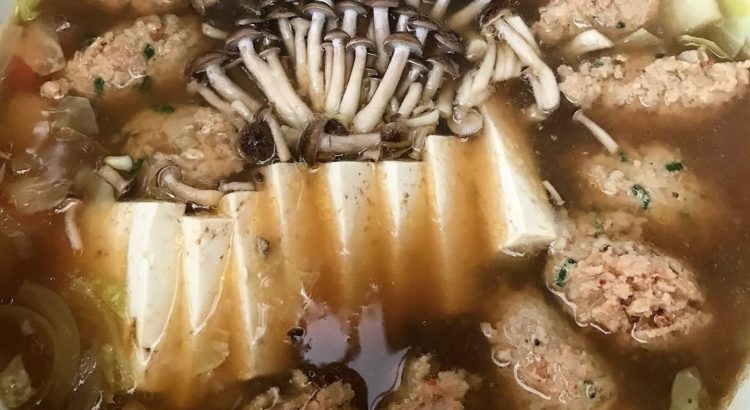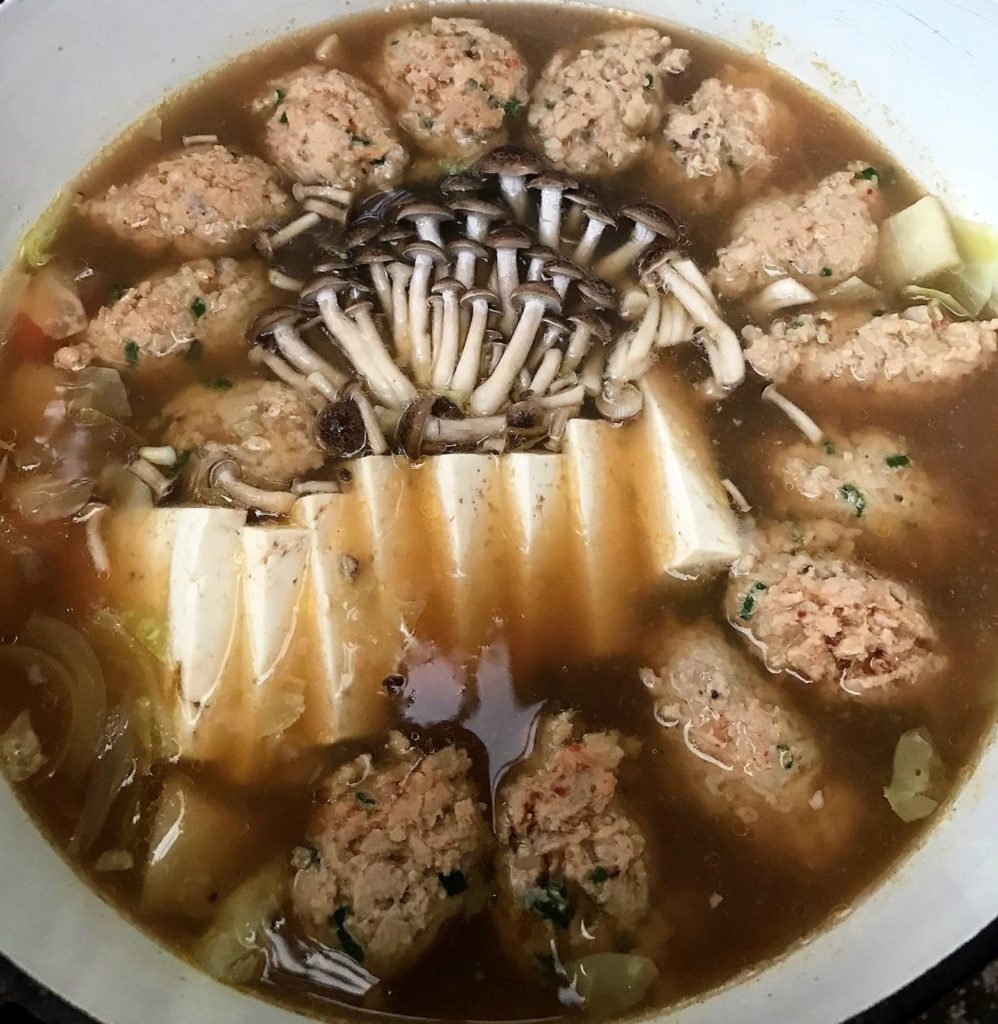
“Sumo is the most perfect of sports. It has elegance, ceremony, danger, art, speed and most importantly two fat bastards smacking the shit out of each other. It is immaculate, which is why it has remained essentially unchanged for thousands of years. It remains the only thing in the world I want to see stay static. The only thing I love that loves me back.”
Warren Ellis – Transmetropolitan
In my last post I made passing reference to watching quite a bit of sumo wrestling recently. An admission that, a decade ago, probably would have earned me some freaked out, civilian side-eye. Luckily, today the concept of watching anything on your phone is normal, even if it involves nearly-naked fat men smashing each other into a clay floor.
Wait, did he just say? Yeah, for all the people who clicked in thinking this was just going to be a hot pot recipe, buckle up ’cause I’m also going to talk about SUMO! Huge, diaper-clad Japanese guys throwing salt around and beating the beejezus out of each other is one of my current obsessions and like a good portion of my former co-workers and ex-pat friends I religiously watch the English dubbed tournaments recaps that go up six times a year on NHK’s Grand Sumo Highlights.
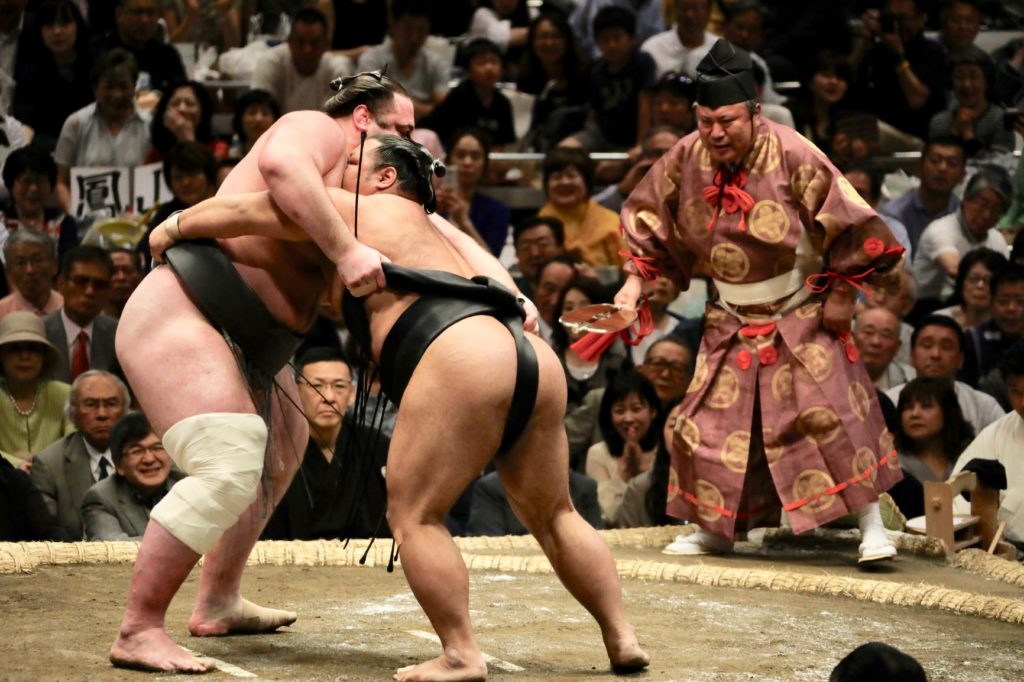
Photo by Bob Fisher on Unsplash I got into it because of Tony Bourdain’s early 2000s show A Cook’s Tour, specifically the episode when he travels to Tokyo. Uncle Tony seeks out a sumo stable to watch the big boys train and cook their ubiquitous, communal meal; a hot pot filled with gargantuan portions of broth, vegetables and chicken called a chankonabe.
Adhering to a truly ancient tradition the wrestlers (called rikishi) still live together in communal households/stables and take turns sourcing meat and produce from local markets bring it all home, chop, slice and simmer the bulk-building hot pot and serve their brothers in battle. It’s similar to the way Zen monks would take turns in the kitchen as part of their weekly chores of devotion.
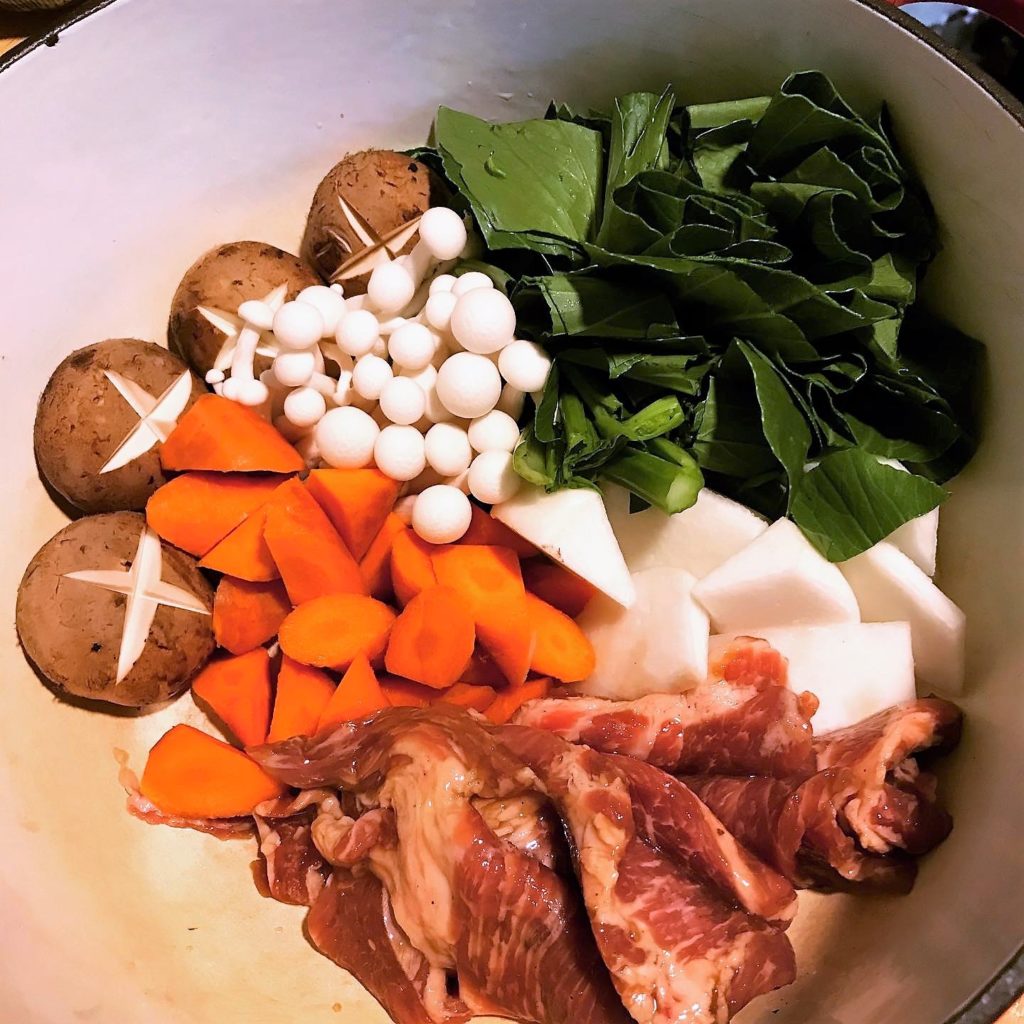
The pot can contain an assortment of anything that is in season except pork and beef (which everyone always adds anyway!) which have four legs, resembling a sumo wrestler who has been beaten and is thought to bring defeat if eaten. Tofu and simple chicken meatballs (tsumire) are a classic all-year ingredient, both adding a big protein kick to a mostly vegetable-based stew. Gargantuan portions of rice and beer round out the daily caloric intake of these fighting machines, bloating their frames with the all-important weight that will keep their opponents from tipping them during a contest of strength.
During this last tournament- which was held in March during the early weeks of the Covid-19 pandemic and filmed without anyone but the wrestlers and a select group of judges in the vast stadium – I made chankonabe a record three times in two weeks for myself and my wife. You may be asking yourself why would two Canadians with no dreams of wrestling super-stardom want to eat like a rikishi?
Because it’s delicious, that’s why! *laughs* Anyone can eat chanko-style food without ballooning to Ichinojo-levels, all you have to do is scale down your portions. Rikishi eat out of giant iron cauldrons while the two of us nibble from a medium-sized dutch oven. We skip the rice and beer and just enjoy the soup/stew as a soothing (and might I add, immune system-boosting) end to a long day ladled out in small bowls.
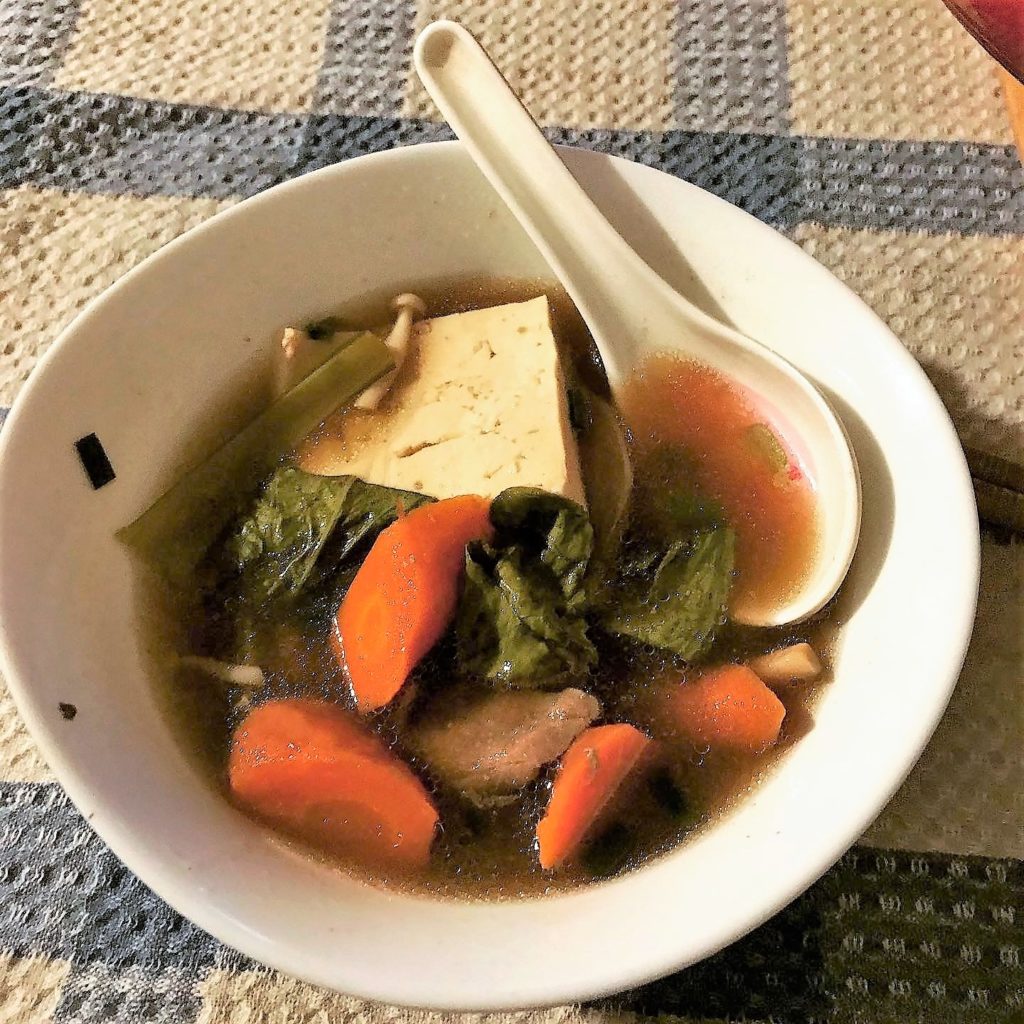
Sumo-Style Hot Pot
Ingredients
- 8 Chicken Drumsticks (roughly 1.4kg)
- 1 Med White Onion (140g, large dice)
- 1 Thumb ‘o Ginger (25g, smashed with the side of a knife and chopped)
- 2 Medium Leeks (90g, washed and chopped)
- 4 Litres Cold Water
- 1 Large Carrot (120g, peeled and large diced)
- 1/4 of a large Daikon Radish (180g, peeled and large diced)
- 1/4 Head of Nappa Cabbage (80g, roughly chopped)
- 8 Shiitake Mushrooms (55g)
- 1 Handful of Shiimeji Mushrooms (40g)
- 7 1/2 Oz. Medium-Firm Tofu (215g, sliced)
- 1 Large Handful of Mizuna (65g, stems trimmed)
Method
Trim all the meat of off the chicken drumsticks and set them aside for making meatballs. Combine the chicken bones, onion, ginger and leeks in a medium-sized pot half-full with cold water. Bring the pot to a boil over high heat, turn down to medium and simmer for four hours uncovered. Strain out the solids and set your broth aside. This is in many ways a baby version of a Master Stock and would benefit from the addition of any extra broth you have hiding in the freezer.
Pull out your heaviest heat proof clay cooking bowl or dutch oven and arrange the carrots, daikon and cabbage in the pot. Pour in the broth and heat the pot to simmering over medium heat. Simmer the veg for 8 minutes or until tender and carefully drop in the mushrooms, mizuna, tofu and chicken meatballs (recipe below).
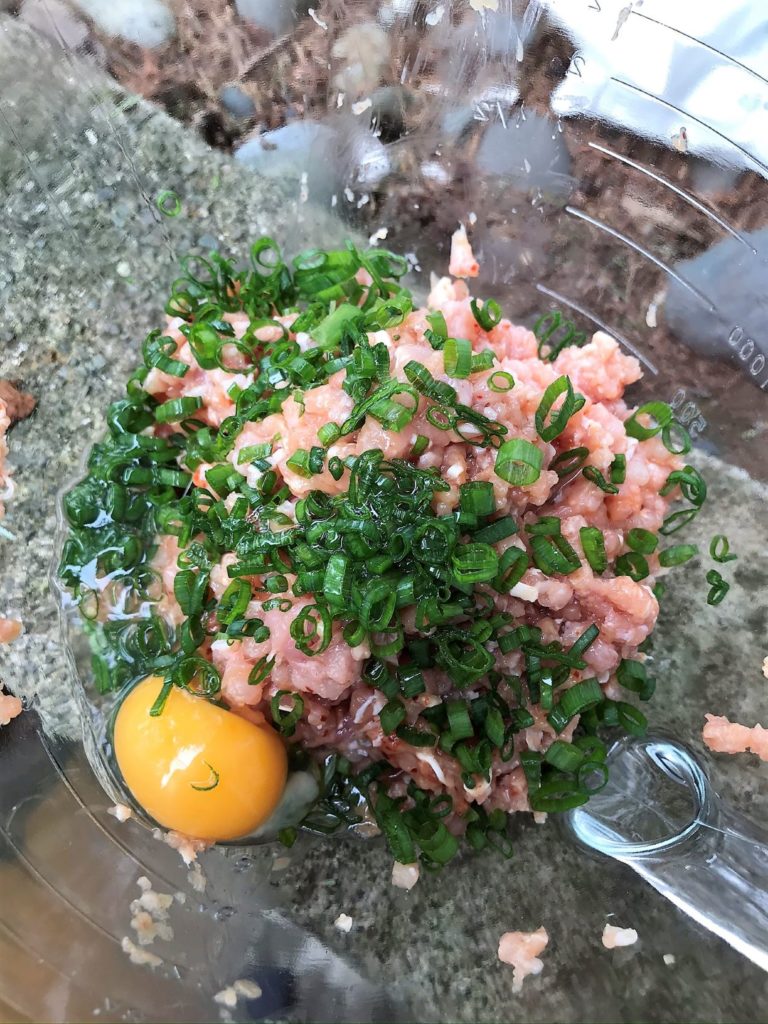
Chicken Meatballs
Take all the meat stripped off the drumsticks and soak them in 1 Tbls (15ml) each of Soy Sauce, Sake and Mirin. Pass the marinated meat through a grinder or chop finely by hand. Add a Tsp (5ml) of Sesame Oil along with a handfull of finely chopped Green Onions (12g) one Whole Egg and 1 Tbls (7g) of Cornstarch. Mix it all up and scoot the bowl over beside your simmering hot pot. Using two spoons, scoop up a wad of the chicken mixture and passing the mix back and forth between the two teaspoons create a small football-shaped quinelle. This will probably take a couple failed footballs before they start looking nice. Don’t stress, it’s all edible. Drop each little football into the simmering broth as quickly as you can. The meatballs should fill the un-occupied spaces in the broth
Once all the meatballs are simmering away, put a lid on the pot and finish simmering for another 4 minutes before serving. Every ingredient should be soft and well heated through and the meatballs should be bobbing contentedly atop the pile. Ladle a bit of each item into serving bowls and top with more of the broth.

While you are simmering Sumo-Style Stew check out the Grand Sumo Breakdown Podcast on iTunes or wherever you get your pods.
